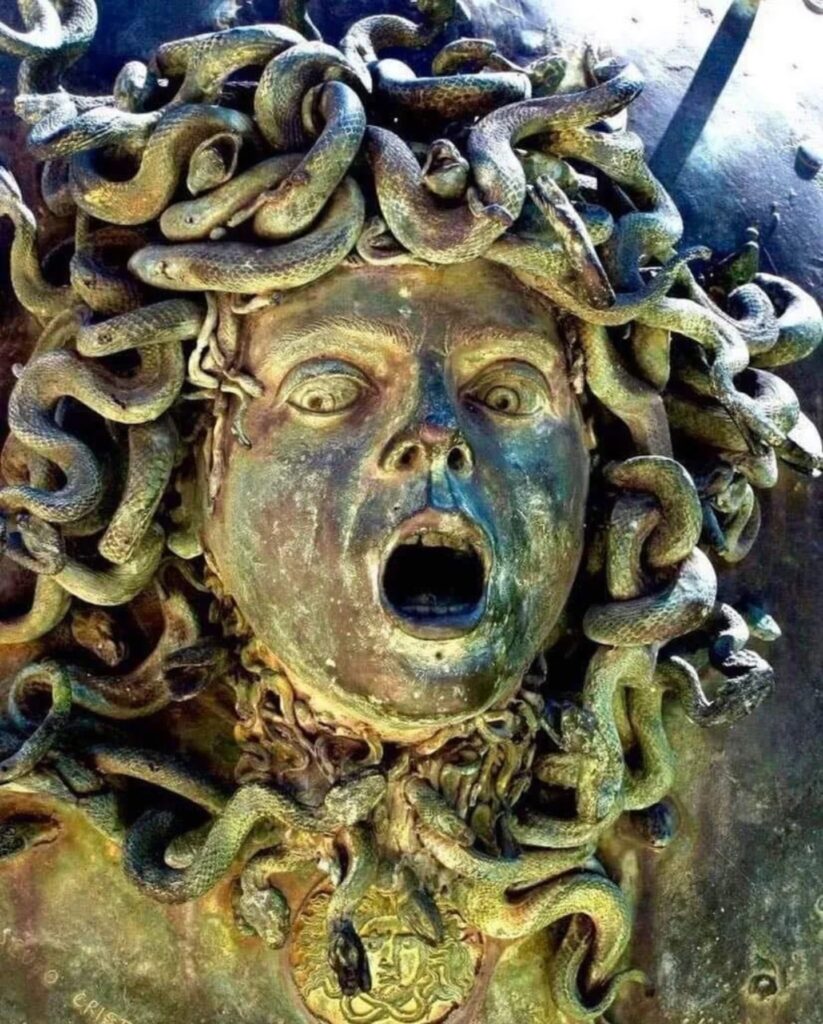A remarkable bronze Medusa head was recently uncovered near the site of a Roman villa, offering a fascinating glimpse into the artistry, cultural practices, and symbolic beliefs of the ancient world. The piece, featuring the iconic visage of Medusa—one of mythology’s most fearsome and intriguing figures—shed light on the Roman fascination with mythology and its integration into daily life.

Aesthetic and Protective Power
The head of Medusa, with her serpent-haired appearance and piercing gaze, was likely used as both a decorative and apotropaic (protective) element. In ancient Roman culture, Medusa’s image was often employed as a powerful symbol to ward off evil and protect against misfortune. The placement of such an artifact near a villa’s entrance or in a garden would have served not only to enhance the aesthetic appeal of the property but also to safeguard it from harmful influences. Medusa, though terrifying in myth, was revered in Roman art for her ability to mesmerize and offer protection.
A Symbol of Wealth and Status
The craftsmanship of the bronze Medusa head speaks to the wealth and cultural sophistication of its likely owner. The fine detailing and high-quality material suggest that the artifact may have belonged to a household of high social standing, possibly a wealthy or influential family. Given the location of the find, near an opulent villa, it is likely that this was a piece intended to display both status and refinement, adding a layer of symbolic significance to the villa’s entrance or surroundings.
Mythology in Roman Life
The discovery of the Medusa head reinforces how deeply mythology was embedded in the everyday lives of the Romans. Figures from myth, like Medusa, were more than just subjects of stories—they were integral to the visual culture and ritual practices of the time. Medusa’s terrifying image, in particular, served a dual purpose: to both deter evil and enchant with her power. This intertwining of art and belief is a powerful reminder of how symbols were used in ancient Rome not only to convey cultural identity but to actively shape the world around them.
A Rare and Insightful Find
The bronze head, remarkably well-preserved, contributes to the growing body of archaeological evidence that reveals the pervasive influence of mythology in Roman society. Its discovery not only offers insights into the decorative and symbolic practices of the time but also highlights the connection between material culture and the broader cultural and spiritual beliefs of the Romans.
This discovery near a luxurious villa adds another layer to our understanding of the elite society of ancient Rome. It underscores how the powerful symbolism of Medusa, a figure of both beauty and terror, was harnessed by the elite for protection, prestige, and artistic expression.
Conclusion
This striking Medusa head not only offers a glimpse into the artistry and symbolism of the Roman world but also reminds us of the rich cultural fabric of ancient society. As we continue to unearth and study artifacts like this, we gain deeper insight into how the Romans lived, believed, and expressed their identities through art, mythology, and symbolism.
Leave a Reply